
Text
On Japanese Aesthetics
By Aisaku Suzuki
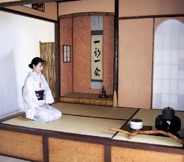
It is certainly difficult to determine what is the most important in life, but there are things which are useful as well as agreeable, for example: “to eat and to drink”. Therefore it would be perhaps suitable to begin to talk about different manners of presenting the meal between Japan and Europe by juxtaposing the characteristics of Japanese aesthetics with those of Western aesthetics.
There is a different conception of presentation between French and Japanese meals. The French meal goes as if you were driving on an one-way street. You begin with an aperitif and then pass on to an hors d’oeuvre, and to an entrée or a soupe, afterwards a main dish, then to cheeses, to the coffee and perhaps at last a pousse-cafée or a liqueur. It’s not possible to reverse this order and to go back to the opposite direction, because as soon as you have finished a dish, it will be put off in order to serve an another dish. In the Japanese meal on the contrary it is served in very small plates and bowls at the same time and so you can “wander” freely from one plate to another. For example you can taste a soupe from soja and at the same time try a grilled fish or fried vegetables. Each plate is prepared in such a way that it harmonizes well as taste with another plates. Moreover the meals are often so miniscule, that they don’t give you the impression that you have eaten something substantial. They are so light that you have always a desire to eat more. Because the Japanese believe that seeing a big quantity of meals they loose quickly the appetite. All in all man can say that the French meal goes on according to a chronologic pattern, while the Japanese meal is organized according to a pattern of spatial juxtaposition.
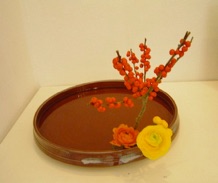
Perhaps you ask yourself how could be realized this “ma” for the aesthetic presentation of Japanese meal. If there are so many small plates and bowls with different foods, is there still a empty place on the table? Yes, it is surely. Because on the plates and in the bowls are presented so few meals that they look beautiful. You can perceive the importance of the empty space in Japanese arts like ceramic, Ikebana, calligraphy, painting and poetry.
The haiku, the shortest and probably the most popular Japanese poetry, is also known and appreciated in the West. It is a poem of 3 lines and 17 syllables. In a most reduced space are expressed thoughts and sentiments. Let me quote as example a haiku of Bashô (1644-94) who lived in the second half of the 17 century and is considered as the most original poet of Japan.
Saying something Mono ieba
The lips grow cold Kuchibiru samushi
Autumn wind Aki no kaze

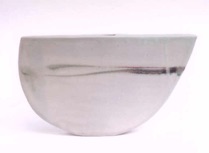
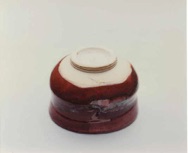
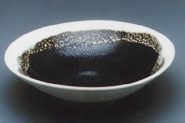
The third principle of Japanese aesthetics is the sensual perception. In order to explain it I would like to compare briefly between the Western thought and the Japanese.
By the famous thesis of the being: I think, therefore I am (Cogito, ergo sum), Descartes has presented the self-consciousness as foundation of his philosophical system. The self-consciousness is a concept related to time and having nothing to do with the space. The cogito is, according to Descartes, the reality which transcends the world and independent from it. For the tradition of Japanese thought on the contrary it is unimaginable that an I or the subject exists independently from the world. For the Japanese thought the only reality is the world of phenomenon of which we are conscious at a determined place and time. As says Basho whose haiku I quoted just before: "What the pine is, learn from the pine. What bamboo is, learn from bamboo”. That is to say that the real world is always accessible, because it is directly connected with our perception.
This manner of thinking which is directly linked to the sensual perception forms also correspondingly the aesthetic sensibility. Contrary to European concept of aesthetics which is based on the perfection and the durableness, the Japanese sense of beauty is founded on impermanency. All that is living is ephemeral. Kenkô Yoshida (1285-1350), Japanese man of letters, asks himself if we should only look at flowers in full bloom, contemplate the moon only in the clear sky. He says that “it is much to be seen in young boughs about to flower, in gardens strewn with withered blossom. To look out on the rain and long for the moon, to shut the bamboo curtains and not to know the passage of the spring - these arouse even a tender feeling”(Tsurezuregusa 137).
“In everything, no matter what it may be, perfection is undesirable. Leaving something incomplete makes it interesting, and gives one the feeling that there is room for growth- (82, Essays in Idleness, translated by Donald Keen).
As origin of such thoughts you find the buddhistic consciousness of impermanency (Sanskrit: anitya, jap. mujo). “All that is born, is liable to disappear” (Mehavagga Vinaya Pitaka, I,6,29). All being is then without substance. Therefore according to Buddhism it’s absurd to think only to perfection and to permanence, because all is in flux of becoming and passing away. To understand really that all is impermanent must give a feeling of peace and consolation. “In all things it’s the beginning and the end which is really attractive” (Tsurezuregusa 137). He was deeply conscious of the impermanence of life and has appreciated it all the more.
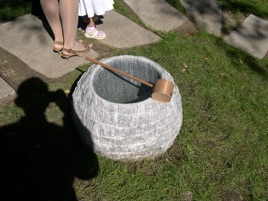
The Japanese culture is in comparison to the Western culture is one of sensual perception, of the direct experience. The traditional Japanese arts like tea ceremony, painting, poetry, Ikebana and ceramics are means to come to a personal unity between body and mind. Learning these arts consists in learning a certain bodily manner to behave (katachi), which will be achieved in an aesthetic bodily form of behavior, to which the mind is called to follow. The Western tradition which under the influence of ancient Geek and Christian thoughts has given a privilege to the spirit against the body and has thus very underestimated it. Although the ancient Geeks have given a much importance to the training of the body, Plato who has associated the head as seat of intellect and of rational thinking, has turned away the attention of the philosophical tradition about the body. In this regard let us quote a characteristic example of Pascal’s thought: “ I can well conceive a man without hands, feet, head ( because it’s only by experience that we learn to know that the head is more necessary than the feet), But I cannot conceive a man without thought: it would be a stone or an animal” ( Pascal, Pensées, éd. Brunschwieg n˚ 339).
It is only with Nietzsche and later with Merleau-Ponty that Western philosophers have begun to develop extensively their thoughts about the body. In „The Gay Science“ Nietzsche proposes a radical change of view about the body to the Western philosophical tradition: “The unconscious disguise of physiological needs under the cloaks of the objective, ideal, purely spiritual goes to frightening lengths - and often I have asked myself whether, taking a large view, philosophy has not been merely an interpretation of the body and misunderstanding of the body. Behind the highest value judgments that have hitherto guided the history of thought, there are concealed misunderstandings of physical constitution(der leiblichen Beschaffenheit) - of individuals or classes or even whole races” (Gay Science, preface to the second edition 2). In this sense Nietzsche is a turning point of Western philosophy, because he has radically called into question of the foundations of Western philosophy.
In the Far Eastern thought on the contrary the body has been always at the center of philosophical preoccupations, in particular in Zen Buddhism, which exercised a strong influence on arts. The zazen, sitting meditation of Zen Buddhism, is not at all a meditation on some thoughts, but an exercise to eliminate all thoughts, by means of which you transform yourself into the pure body-self. As Dôgen (1200-1253) puts it : While you are thinking about the Buddha Way you can never attain it. When you abandon to think and stop all your reasoning and practice the zazen only with the body, then you will arrive at the Buddha Way (Shôbôgennzô Zuimonki 3, 21). A Zen master said: when he eats, he eats and when he sleeps, he sleeps, and this is Zen”. This concentration on what you are doing at the moment, is the foundation of Zen Buddhism.
I would be pleased if these thoughts on Japanese aesthetics would give you not only a free access to my works, but also give a possibility to understand the differences between Japanese and Western cultures.
Bibliography:
Essays in Idleness. The Tsurezuregusa of Kenkô, trans. Donald Keene (NY, 1967)
Alain Kervern, Bashô et le haiku (Paris,1995)
Nancy G. Hume, Japanese Aesthetics and Culture, A Reader (NY. 1995)
Michele Marra, Modern Japanese Aesthetics, A Reader(Honolulu, 2002)
Friedrich Nietzsche, The Gay Science, trans. Walter Kaufmann (NY, 1974)
Dôgen, A Primer of Soto Zen, A Translation of Dôgen’s Shôbôgennzô Zuimonki (Honolulu,1971)
Yasuo Yuasa, The Body, Toward an Eastern Mind-Body Theory (NY, 1987)
Michela Marzano, Dictionnaire du corps(Paris, 2007)